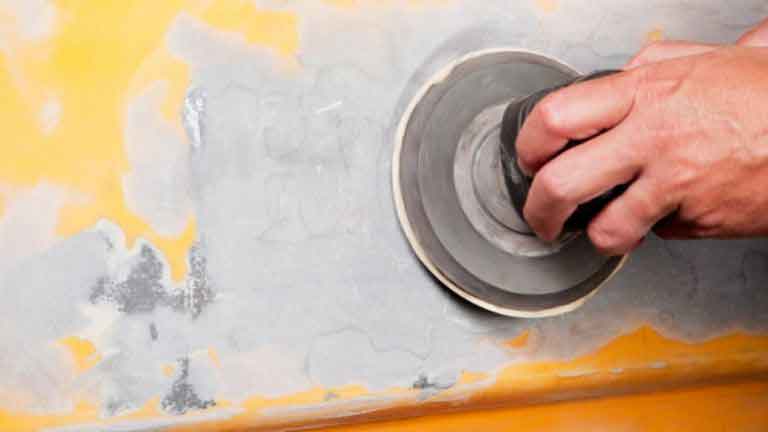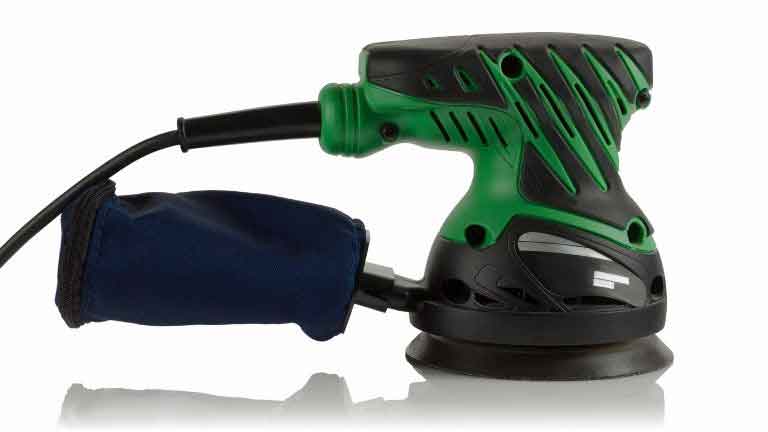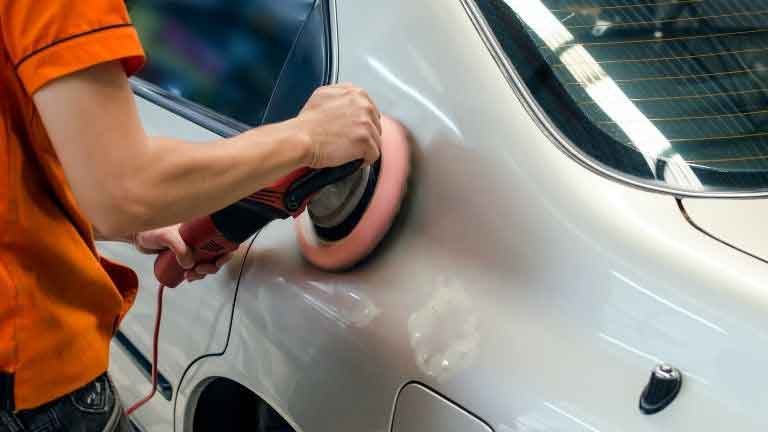The world of sanding tools can be confusing. There are many different types and brands to choose from.

The two most popular types of sanders are a DA (or Dual Action) sander, and a Random Orbital Sander.
If you’re not sure what the difference is between these two, this blog post will give you some insight into their uses, advantages, disadvantages, and how they compare!
What is a Dual Action Sander?
A dual-action sander is a type of power tool that sands wood or other materials with an oscillating head. The Dual Action Sander uses both horizontal and vertical motions to engage the sandpaper, making it ideal for getting into corners. It’s also less likely to leave visible marks behind because you can move in any direction while you’re sanding.
What are the advantages and disadvantages of using a Dual Action Sander?
A major disadvantage to this type of sander is that it requires more physical strength than other types, which can be uncomfortable for people who have weaker arms or hands due to injury or disability. The offset handle design may also make it more difficult to get into tight corners.
A Dual Action Sander is also less likely to leave visible marks behind on the surface because it’s designed for a variety of surfaces and angles, making it more versatile than other sanders. It does require some time getting used to how much pressure you need when using this type of sander, especially for auto detailing and finishing tasks, but you can move in any direction while you’re sanding or buffing with a DA sander.
The best time to use a Dual Action Sander is when the surface has gouges or deep scratches that need filling and an edge needs smoothing out. It also works well on surfaces like trim, paneling, textured walls, and wood floorboards because it does not leave a textured surface.
What is an orbital sander?
Orbital sanders are also known as power palm sanders (or pneumatic ones). These handheld sanding tools rotate at high speed in a circular motion across the surface. The sanding pad can be made of natural or synthetic material and may use a hook & loop, Velcro, or discs to attach it to the sander.

What are the Advantages & Disadvantages of Using an orbital sander?
Random orbital sanders are typically more powerful than dual-action sanders and have a longer lifespan. This makes them a good choice for those who use their sander often or on larger surfaces.
Due to its fast rotation, it is more suitable for finishing up the rough surfaces than the random orbital ones.
Both random orbital sanders and da polishers are lightweight and have ergonomic grips that work well for all hand sizes, which reduces fatigue.
However, the circular motion that is made by the random orbiter can create an uneven finish, which will require more effort with a palm sander or hand blender to fix it.
Difference Between Dual Action Polisher and Random Orbital Sander
There are some slight differences between these two types, at least from a stranger’s perspective. Inside, there are huge differences in their work processes, as one utilizes only rotational force where the other uses both rotational and oscillating force to get the job done.
Handle Size
The handle size of a da sander is smaller than that of a random orbital sander. However, with time, this difference is getting smaller, and nowadays, you’ll see some da sander having a larger handle than that of an RO sander. That’s all because of the requirements of the end users.
Ease of Use
DA polishers are easier to use than RO sanders. That’s because of the unique dual motion feature that prevents swirl marks on the surface. If you remain vigilant and use common sense while using DA sanders, you won’t have any issues like uneven sanding or swirl marks on the surface.
On the other hand, Random orbital counterparts are harder to use and require more practice and knowledge. If you are not cautious while using these, you’ll surely end up having uneven surfaces and swirl marks.
Price
The price of a da sander is comparatively higher than that of an RO sander. The reason for this difference in pricing is the popularity, demand, and availability of these products. If you’re looking to buy one for DIY, we suggest getting a dual-action sander for versatile use. If you are in budget, go with a random orbital sander because it’s cheaper and only costs about $100.
What to Use?
From the above explanation, you may have been thinking why would someone need a random orbital sander while dual action sander can do the same thing with better results. Hold on then!
Random orbital sanders are for heavy-duty works. When you need to get rid of a good amount of surface layer, there is no close contender against Random orbital sanders.
But for finishing jobs like car waxing, or final finish after repairing a dent on your car, you will need a dual-action machine.
So, the bottom line?
Dual-action sanders are best for finishing jobs while random orbital sanders are best in heavy-duty surface sanding.

What is Inline Sander?
An inline sander has two rolls of sandpaper that are glued together and is pushed back and forth across the surface to be sanded. Some inline sanders come in round shape with sandpaper rolling the outer surface that you can utilize to sand any surface.
These are used for narrow surfaces such as door frames (or on hardwood floors to get into tight corners). They are best for straight, flat surfaces.
This type is not so common in the automotive industry as you can do most of its job with other power tools. But having one may give you a slight advantage sometimes when you need to do straight sand without touching the parts close to the work surface.
What is Hand Blend in Sanding?
A hand blend in sanding is a technique where the user uses their hands to move, or “blend” the paper across a surface. This is often used when using an orbital sander. The palm of your non-dominant hand should be facing up and then use it to gently blend the paper onto the workpiece while moving your dominant hand along the paper. This is often referred to as “push-pull” movement and can be done with either a polisher or sanding pad, in addition to an orbital sander.
This is a technique requires in some finishing job where regular da sander doesn’t work well.
Generally, the fender of your car, curvatures, dips are the places where you may need to utilize the hand blend instead of a da polisher.
Conclusion
As you can see, there are a lot of different types of sanders that can be utilized in auto detailing.
It’s always a good idea to have both types of sanders on hand. The dual action will be your go-to for most tasks, but the random orbital is best for heavy-duty jobs like paint removal or dealing with rust spots.
If you’re just starting out with DIY car washing and detail work, it’s best to start with the dual-action sander as it is more forgiving than other types.
When choosing between random orbital or belt sanders for your needs though, always ask yourself what type of job you’ll need them for most often before purchasing one or the other.
Hopefully, this post has helped answer any questions about whether an inline sander should be used on paint jobs versus hand blending when polishing metal parts!